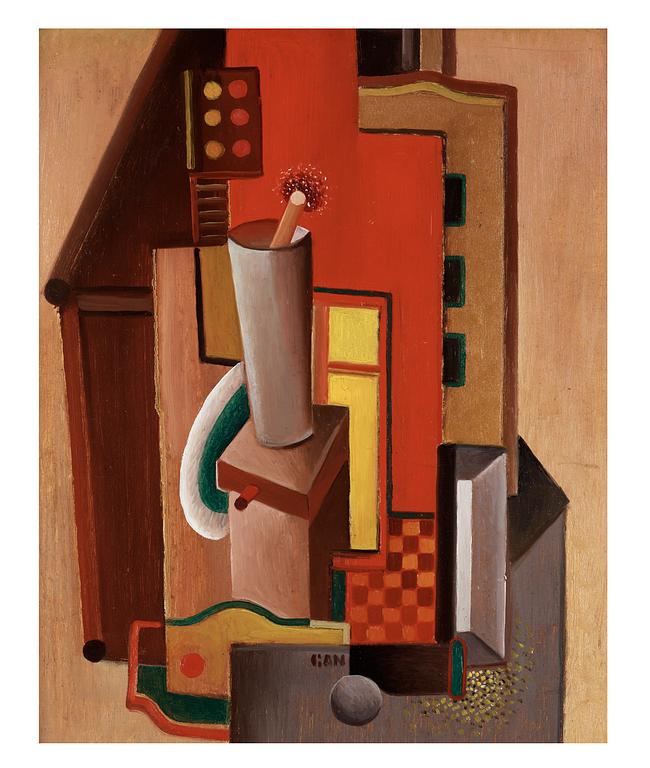Gösta Adrian-Nilsson
"Nature morte"
Signed GAN. On verso signed Gösta Adrian-Nilsson. Painted in Paris circa 1923. Paper panel 44.5 x 36.5 cm.
Provenance
Earlier in the collection of Harry Runnqvist, Stockholm.
Svensk-Franska Konstgalleriet, Stockholm, 8 November 1966, lot no 175.
Karin Jacobson (acquired at the sale above).
Private collection.
Exhibitions
Malmö Museum, "GAN", exhibition arranged together with Svensk-Franska Konstgalleriet, Stockholm, 1-23 October 1955, cat no 25 ("Nature Morte, 1923").
Liljevalchs Konsthall, Stockholm, "GAN. Gösta Adrian-Nilsson. Retrospektivt", 29 March - 27 April 1958, cat no 95.
Designer
Gösta Adrian-Nilsson is most notable as a visual artist, and he is a pioneer of Swedish modernism. He studied at the Tekniske Selskabs Skole in Copenhagen and later for Johan Rohde at Zahrtmann’s school in Copenhagen. As an avant-gardist, Nilsson was constantly searching for new influences. In Berlin, he was influenced by the circle around the radical magazine Der Sturm, through Kandinsky and och Franz Marc. In Paris through Fernand Legér and the artists in his circle. GAN was an eclectic in the positive sense of the word. He took the the artist styles of the 1900s and created new impressions. Symbolism, cubism, futurism, expressionism, constructivim and Theosophy were the colours occupying his internal pallet. He had a sharp eye for the masculine and his painting was often energized by the vitality of modern technology, vibrant eroticism, and echoes of tyrants. No other Swedish modern artist exhibits such a unique style.
Read more


























